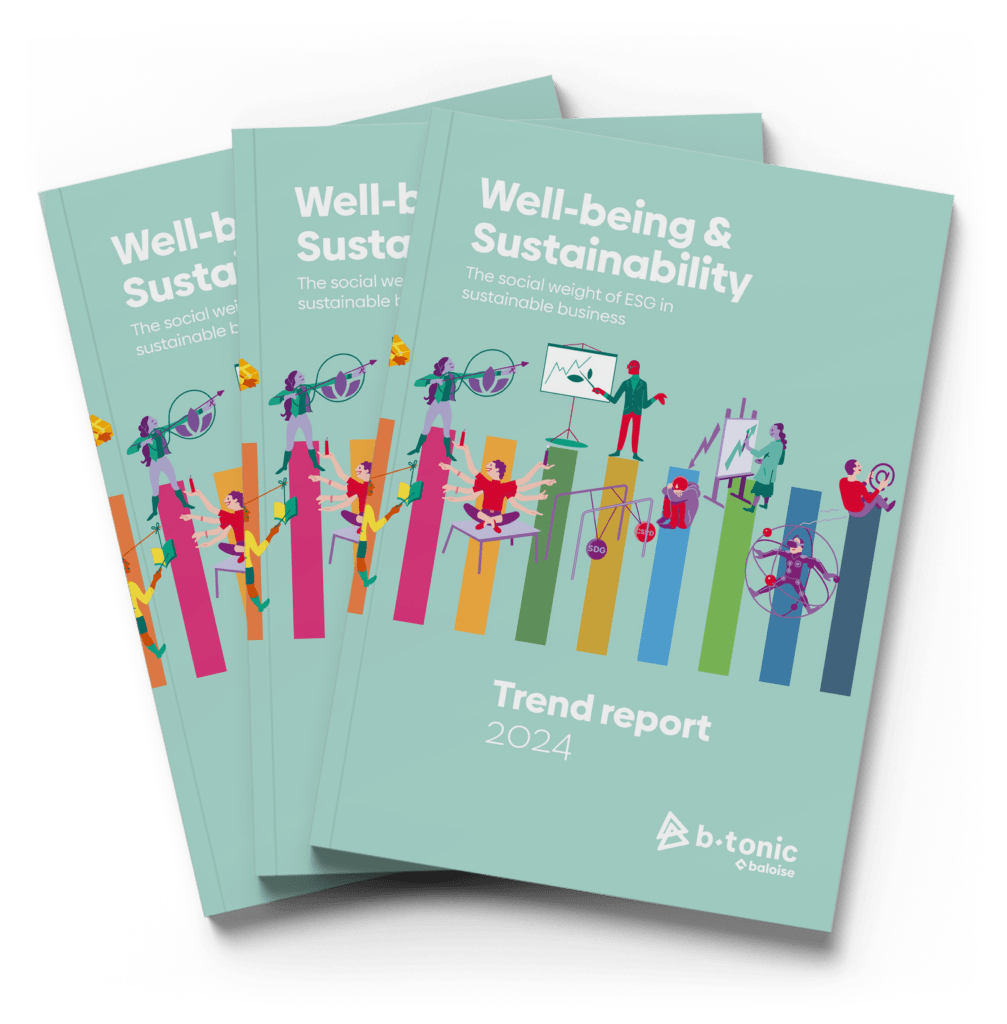We already know that well-being at work plays a crucial part in employees’ motivation, happiness and loyalty. However, there are also four types of well-being: mental, physical, social and financial. Only when they are balanced, will there be a stable and thriving work environment. In this blog, you’ll read how you can get the four types to collaborate optimally.

1. Mental and emotional well-being: Enhancing resilience and focus
Mental well-being at work involves employees’ emotional health and well-being. Creating a supportive and positive work environment can contribut to lessening stress, enhancing resilience and improving focus. Employers can enhance the mental and emotional well-being by stimulating open communicating, providing stress management programmes and giving employees the flexibility to find a healthy balance between work and life.
2. Physical well-being: Healthy working conditions and active breaks
Physical well-being at work is concerned with the health and vitality of an employee’s body. It entails creating ergonomic working environments, promoting physical activity during the work day and supporting healthy eating habits. Employers can offer facilities, such as standing desks, ergonomic chairs and rooms for active breaks, such as a fitness room or walking paths. This promotes a healthy lifestyle and lessens the risk of health problems related to sedentary work.

3. Social well-being: Building strong teams and meaningful connections
Social well-being at work involves the quality of the relationships between employees, the team dynamic and a sense of connection. Encouraging team work, creating chances of social interaction and fostering an inclusive working culture are essential. Employers can organise team building activities, facilitate social events and create the space for open communication and collaboration. By building strong teams and encouraging meaningful connections between employees, you create a supportive and positive working environment.
4. Financial well-being: Fostering financial stability and security.
Financial well-being at work is concerned with employees’ financial stability and security. Employers can contribute to this by offering fair and competitive salary structures, transparent communication about recompensation and benefits, and financial advice and support. Organising financial education programmes and encouraging saving and pension planning helps employees build a healthy financial future, which in turn lessens stress and improves focus at work.
To help employees make the right financial choices, Baloise developed an online platform: gonna.be. You can, for instance, simulate what will happen to your income when you fall absent due to illness.
Improving well-being at work is clearly much more than simply ensuring a healthy and safe work environment. By paying attention to each of these four types of well-being, employers can create an environment in which employees thrive, are productive and feel valued. A healthy balance between mental health, physical activity, social connection and financial stability contributes to satisfaction, engagement and success at work.
Do you want to know more about how to foster employee well-being at work sustainably? Discover our dossier about People Sustainability.





